- Home
- John Updike
Higher Gossip Page 27
Higher Gossip Read online
Page 27
He had the good fortune to be “a great radio speaker born into the era of radio.” As an experimenter with the economy, however, he was capricious and vacillating. In his manipulations of gold and the gold standard, according to Shlaes, “FDR’s playfulness was at its most destructive.” This was no time for playfulness: “Focusing on the fun of experiments neglected the question of whether unceasing experimentation might frighten business into terrified inaction.” The plethora of ambitious programs and agencies perpetrated in the first hundred days of the New Deal seemed aimed more at creating a sensation of activity than at achieving feasible objectives: “Americans must know Washington was doing something. If there were contradictions between experiments and within them, well, that did not matter.” Shlaes, in a bold stroke of psychologizing, lays the hyperactivity to “the restlessness of the invalid.” She goes on, “Like an invalid, the country took pleasure in the very thought of motion.” More ominous was Roosevelt’s totalitarian tendency: “His remedies were on a greater scale and often inspired by socialist or fascist models abroad.”
One of Shlaes’s chapter-length detours deals with a junket that, in 1927, on the good ship President Roosevelt (named after Theodore), carried a self-designated “unofficial American trade-union delegation” to investigate and report on conditions in the Soviet Union. A number of these junketeers—the Columbia economist Rexford Guy Tugwell, the economic commentator Stuart Chase, the Chicago labor scholar Paul Douglas—were to become significant supporters of and participants in the New Deal. Toward the end of the junket, this progressive delegation was granted an interview—“A small pockmarked man met them in a cloakroom; Douglas assumed it was an attendant”—with Joseph Stalin, who conversed and answered their questions for more than six hours. Stalin was not wasting his time; wooing susceptible Americans might lead to unofficial U.S. approval if not official recognition of the Soviet Union. Stuart Chase upon his return wrote, “Laissez-faire rides well on covered wagons, not so well on conveyor belts and cement roads.” Collectivism was the inevitable direction. After all, Chase wrote, “why should Russians have all the fun remaking a world?” The poisoned chalice was passed around. Shlaes names New Dealers with Communist connections—Lauchlin Currie, Harry Dexter White—and supposed spies such as Lee Pressman and Alger Hiss, who “duped colleagues in government repeatedly.” But “few New Dealers were spies or even communists,” she reassures the reader. “The problem was their naïveté about the economic value of Soviet-style or European-style collectivism—and the fact that they forced such collectivism upon their own country.”
Another chapter, “The Chicken Versus the Eagle,” takes us through the legal case of a Brooklyn band of brothers, the Schechters, whose name means “ritual butcher” in Yiddish, and whose business was the marketing of kosher chickens. In 1934, Roosevelt’s Justice Department prosecuted them under the National Recovery Administration’s Code of Fair Competition for the Live Poultry Industry of the Metropolitan Area in and About the City of New York, “a lengthy and forbidding document.” The code forbade, among other deleterious practices, so-called straight killing, which meant that “customers might select a coop or a half coop of chickens for purchase, but they did not ‘have the right to make any selection of particular birds.’ ” Not only did the code unleash upon their business a plague of ignorant and imperious government inspectors, the Schechters argued, but “they were busting in on an intimate private relationship: that of the small businessman with his customer.” In their first trial, the chicken vendors were found guilty, fined, and sentenced to jail, and the circuit court rejected their appeal; but the Supreme Court, handing down judgment in 1935 in Schechter Poultry Corp. v. United States, unanimously ruled that “the NRA had abused the Schechters, and other businesses, through unconstitutional ‘coercive exercise of the law-making powers.’ ” The London Express ran the headline “AMERICA STUNNED! ROOSEVELT’S WORK KILLED IN 20 MINUTES.” In response, Roosevelt gave an uncharacteristically intemperate press conference, accusing the Supreme Court of wanting to revert to “the horse and buggy age.”
The Schechter case spelled the death of the NRA. Dozens of lawsuits and injunctions besieged such New Deal structures as the Tennessee Valley Authority, the Administration’s showpiece intervention in the utility industry; and the President, flush with his landslide reëlection in 1936, blatantly overplayed his hand by initiating legislation that would have added a new appointee to the Supreme Court for every justice over the age of seventy—a measure plainly aimed at the elderly core of judicial resistance to his revolution. The court bill failed (“dead as a salt mackerel shining beneath the pale moonlight,” a Mississippi newspaper gloated), and the Depression slogged on, ending only in 1940, as the government decisively hiked defense spending. Roosevelt’s extensive and not especially effectual attempts at collectivism prepared the ground for, it might be said, the most truly collective war effort the nation has ever known, with virtually unresisted conscription, dizzyingly raised taxes, severe rationing, price controls, and patriotic participation by every class of citizen.
Shlaes’s Thirties chronicle, with its abrupt hopping, chapter to chapter, from one sideshow to another, is not easy to follow. Government officials blend into a gray mass; non-government notables like the black religious preacher Father Divine and the alcoholic co-founder of Alcoholics Anonymous, Bill Wilson, are dwelt upon to no apparent point except to illustrate the value of self-help and problem-solving without government aid. Many pages toward the end are devoted to building up Wendell Willkie—a man risen from the world of business, like Hoover (and like him called a “wonder boy”)—as a sympathetic, charismatic anti-Roosevelt, but it all comes to anticlimax with Roosevelt’s easy electoral victory, for an unprecedented third term, in 1940. Willkie in his campaign indicted the President’s “philosophy of distributed scarcity” and asserted that it was only “from weakness that people reach for dictators and concentrated government power.” These seem to be Amity Shlaes’s views also, but in 1940 there was no breaking the bond between Franklin Roosevelt and the bulk of the American people. Time, which had backed Willkie, summed it up: “Whether Mr. Roosevelt is Moses or Lucifer, he is a leader.”
The Depression was a good time in which to be a sheltered only child. The small town around me didn’t change; horse-drawn farm wagons mingled the clip-clop of horseshoes with the swish of automobile tires. The vacant lots remained vacant; shoppers and workers were carried to the nearby city (Reading, Pennsylvania, with its Socialist mayor) on the same swaying, sparking trolley cars; the movies and radio were never more innocently entertaining; the schools were safe and tidy, with girls and boys segregated at recess on the asphalt playground; nickels and pennies counted for something; Major League baseball had two symmetrical leagues of eight teams, with five cities fielding two teams each, as they had for years. A child did not know that change and expansion were the norm for a thriving economy. But the two men of my snug household, my father and my maternal grandfather, had both taken deep economic wounds: my grandfather had lost almost all his investments in the stock-market crash, and my father had been laid off from his job as a happily peripatetic telephone lineman. He endured a long interval of odd jobs and no job, with summer stints on local WPA projects. Fortunately, the town school board eventually hired him, for twelve hundred dollars a year, as a math teacher. The job saved him for respectability, but he never forgot the trauma of being out of work with an infant son and no home of his own, in a world with no economic safety net, just breadlines. Hoover in his obtuse aloofness later wrote of the crisis, “Many persons left their jobs for the more profitable one of selling apples.” Shlaes’s account of economic-philosophy wars en haut in Washington could have done with a little of the gritty testimony Studs Terkel collected, for instance that of Peggy Terry, who remembered of a soup line:
“So we’d ask the guy that was ladling out the soup into the buckets—everybody had to bring their own bucket to get the soup—he’d dip the greasy,
watery stuff off the top. So we’d ask him to please dip down to get some meat and potatoes from the bottom of the kettle. But he wouldn’t do it.”
My father had been reared a Republican, but he switched parties to vote for Roosevelt and never switched back. His memory of being abandoned by society and big business never left him and, for all his paternal kindness and humorousness, communicated itself to me, along with his preference for the political party that offered “the forgotten man” the better break. Roosevelt made such people feel less alone. The “impression of recovery”—the impression that a President was bending the old rules and, drawing upon his own courage and flamboyance in adversity and illness, stirring things up on behalf of the down-and-out—mattered more than any miscalculations in the moot mathematics of economics. Business, of which Shlaes is so solicitous, is basically merciless, geared to maximize profit. Government is ultimately a human transaction, and Roosevelt put a cheerful, defiant, caring face on government at a time when faith in democracy was ebbing throughout the Western world. For this inspirational feat he is the twentieth century’s greatest President, to rank with Lincoln and Washington as symbolic figures for a nation to live by.
Makeup and Make-Believe
MAX FACTOR: The Man Who Changed the Faces of the World, by Fred E. Basten. 172 pp. Arcade, 2008.
The happy story of Max Factor, as enthusiastically told by Fred E. Basten, begins, like a movie, at a high-energy moment of extreme peril:
On a winter night in February 1904, twenty-seven-year-old Max Faktor huddled with his wife and three young children in a Russian forest, frightened more for the family he had kept secret for nearly five years than of the wind and snow or even the approaching czar’s men calling his name. Only days earlier, Max Faktor was a favorite of the royal family and was esteemed by the royal court. Now he was being hunted as a fugitive.
The little (“barely five feet tall”) Polish Jew’s involvement with the czar had advanced with the quick progressions of a fairy tale. One of ten children born to a worker in the textile mills of Łódź, he was reared by his siblings and had scant formal education. At the age of seven, he was set to selling oranges, peanuts, and candy in the lobby of Łódź’s Czarina Theatre; he later called this his “introduction to the world of make-believe.” At the age of eight, he worked as an apothecary’s assistant, learning some chemistry; at just nine, he became an apprentice to the city’s leading wigmaker and cosmetician. Within four years, he was proficient enough to join the staff of the Berlin hair stylist Anton, and by the age of fourteen he had moved on to Moscow, where he worked for Korpo, the cosmetician to the Imperial Russian Grand Opera. At his eighteenth birthday, Faktor was obliged to serve four years in the Russian Army; he was picked for the Hospital Corps, and took up nurse’s duties. “I did not like it but I learned much,” he later said.
Discharged at twenty-two, he opened a small shop in the Moscow suburb of R’azan, “making and selling his own creams, rouges, fragrances, and wigs.” According to Basten, a member of a passing theatrical troupe stopped in on the way to a performance before the imperial family, and, “within weeks, Max’s business took a royal upswing in sales and he was adopted by the summer court.” The courtiers adopted him so thoroughly that he had little time left for his own shop—“All my attention,” he remembered, “went to their individual needs by showing them how to enhance their good points and conceal the less good.” The aristocrats paid well and introduced him to their luxurious world but were possessive: he could not leave the court unescorted and was limited to brief weekly visits to his shop; he had to marry on the sly, and fathered three children in five years. Meanwhile, anti-Semitism was on the rise in Russia; in 1903, Czar Nicholas II “ordered a siege on the Jews he so feared and hated, and burned down their villages.” Max longed for America, where a brother and an uncle had settled in St. Louis, with its impending World’s Fair.
A friendly general noticed the court beautician’s downcast mood and, being told of Max’s secret family, arranged for his escape. Before an interview with the general’s personal physician, Max covered himself with yellowish makeup—an especially fairy-tale touch. His sickly appearance won him an official recommendation for three recuperative months in Karlsbad, a spa in far-off Bohemia to which court members often repaired. Russian guards accompanied him, however, so he continually faked a limp; as he hobbled into the main square of Karlsbad, whom should he find huddled at the fountain but his wife, Esther, and their three children! In a twinkling, they disappeared into the Bohemian (not Russian, as in the opening paragraph) forest and, walking mostly at night, travelled “seemingly endless miles”—hundreds and hundreds, it must have been, to the nearest seacoast—“until they reached a clearing in the woods. Ahead was a seaport where the steamship Molka III was boarding for America. Max happily paid the fare. Money was not a problem. Over the years, he had saved nearly $40,000, which he carried with him in a pouch.” No passports were required then, in the flood tide of immigration. A customs official misspelled “Faktor” as “Factor.”
America was not without difficulties for Max and his magic pouch: his English was nonexistent at first, and remained heavily accented; an English-speaking partner who helped him set up shop at the fair in St. Louis absconded with the funds; his wife, less than two years after giving birth to their fourth child, dropped dead on a sidewalk; he sent to Russia for a second wife, and she, Helen, after bearing him his fifth offspring, proved to be so temperamental that he had to divorce her. However, he had opened a barbershop in St. Louis, and it prospered; in 1908, he married a neighbor, Jennie Cook, and headed to California to try his luck supplying cosmetics and hairpieces to a new brand of entertainment, the motion pictures. In those days, one-reelers were being shot all over Los Angeles, under tirelessly blue skies, and Max, from his little shop on the edge of downtown (“Max Factor’s Antiseptic Hair Store. Toupees made-to-order. High-grade work”), spotted some “ghoulish” people passing by. He followed them to an empty lot where a bar brawl was being staged and filmed. Max was curious about what they had on their faces:
Some were using stage make-up, while others wore concoctions they had made themselves: odd mixtures of Vaseline and flour, lard and cornstarch, or cold cream and paprika. The more adventurous had even tried ground brick dust mixed with Vaseline or lard to get a flesh-colored look.
Such pastes, applied an eighth of an inch thick, formed a mask that cracked under the stress of facial expression; this didn’t matter at the distances of a live theatre, but in film close-ups even hairline cracks showed. In 1914, working in his shop’s laboratory, Factor created “a greasepaint in cream rather than stick form, ultra-thin in consistency, completely flexible on the skin, and produced in twelve precisely graduated shades.” The silent-film comedians—Chaplin, Keaton, Fatty Arbuckle—were the first to try it, and “returned not only to give Max their enthusiastic approval but to have him personally apply the new make-up.”
Then there were wigs. Max persuaded Cecil B. DeMille, in town to direct the large-scale Western The Squaw Man, that wigs and hairpieces painstakingly formed of real human hair (135,168 individually knotted strands went into an average Max Factor wig, with sixty thousand in a full beard and a mere seven thousand in a false mustache) were more photogenic than “clumsy substitutes such as straw, mattress stuffing, excelsior, Spanish moss, wool, tobacco leaves, even mohair stuffing from Model-T Fords!” DeMille admired Factor’s wigs but said he couldn’t afford them, and suggested renting them. The deposit needed to safeguard the costly wigs posed a sticking point, which Factor, resorting not for the last time to his brood of useful children, circumvented by waiving the deposit and having DeMille hire his three sons as Indian extras, paying them three dollars a day; at the end of each day, they collected their father’s wigs or had their pay docked. By 1916, Max Factor & Company was booming enough to move to larger quarters, in the prestigious Pantages Building, “at the center of it all.”
Triumph followed triumph. As Basten
—a former assistant in the company’s public-relations department—tells it, Max devised false eyelashes for Phyllis Haver, who was tired of having pies smashed in her face and wanted to move up to vamp roles. He created a yellow makeup to lighten Rudolph Valentino’s skin so that the actor, who ground pigments to help speed up the process, could escape bit parts as a swarthy villain. Max brought the tempestuous Pola Negri to heel by shouting back at her in their native Polish. When he outgrew his space in the Pantages Building, he moved to a new store, on South Hill Street, and called it the House of Make-Up. The theatrical term “make-up”—Max always insisted on the hyphen—had been considered risqué, but at the urging of his son Frank he began applying it to his products, and it swept the world. Snubbed when he visited the German offices of Leichner, for whose stick greasepaint he had been a longtime American distributor, he cabled his sons, “Start selling greasepaint in tubes,” and the tubes were, of course, another triumph. For Douglas Fairbanks’s sweaty exertions, Max invented “the first perspiration-proof body make-up” and then “devised the reverse—cinematic sweat—by simply combining equal parts of water with mineral oil.” For M-G-M’s production of Ben-Hur, he and his staff conjured up more than six hundred gallons of light-olive makeup to match the army of pale local extras to the darker extras already filmed in Italy. He conquered the persistent problem of lip pomade’s melting under the hot studio lights by firmly pressing two thumbprints onto the actress’s upper lip and then one thumbprint on her lower lip, thus single-handedly creating the sensational new look of “bee-stung” lips. For Joan Crawford, he created “the smear.”

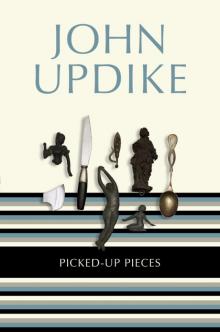 Picked-Up Pieces: Essays
Picked-Up Pieces: Essays Bech: A Book
Bech: A Book Roger's Version: A Novel
Roger's Version: A Novel Seek My Face
Seek My Face The Carpentered Hen
The Carpentered Hen Pigeon Feathers: And Other Stories
Pigeon Feathers: And Other Stories Rabbit Is Rich
Rabbit Is Rich The Afterlife: And Other Stories
The Afterlife: And Other Stories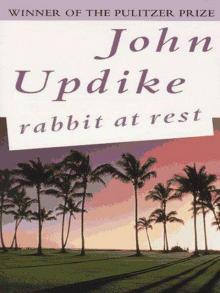 Rabbit at Rest
Rabbit at Rest The Witches of Eastwick
The Witches of Eastwick Gertrude and Claudius
Gertrude and Claudius Bech Is Back
Bech Is Back Hub Fans Bid Kid Adieu: John Updike on Ted Williams
Hub Fans Bid Kid Adieu: John Updike on Ted Williams Marry Me: A Romance
Marry Me: A Romance Museums and Women: And Other Stories
Museums and Women: And Other Stories My Father's Tears and Other Stories
My Father's Tears and Other Stories Collected Poems, 1953-1993
Collected Poems, 1953-1993 Trust Me: Short Stories
Trust Me: Short Stories Odd Jobs: Essays and Criticism
Odd Jobs: Essays and Criticism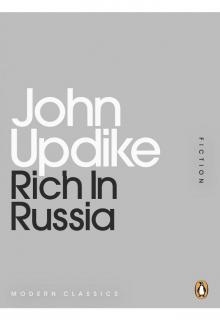 Rich in Russia
Rich in Russia Higher Gossip: Essays and Criticism
Higher Gossip: Essays and Criticism The Widows of Eastwick
The Widows of Eastwick In the Beauty of the Lilies
In the Beauty of the Lilies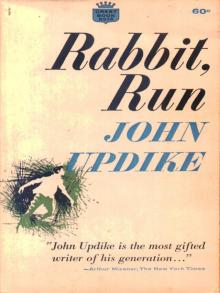 Rabbit, Run
Rabbit, Run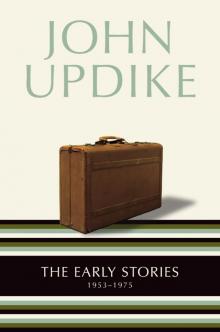 The Early Stories: 1953-1975
The Early Stories: 1953-1975 Rabbit Redux
Rabbit Redux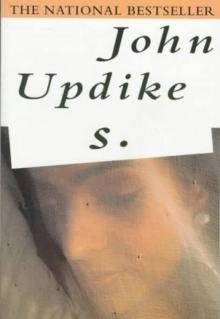 S.
S.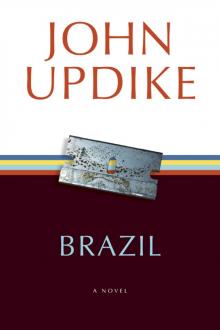 Brazil
Brazil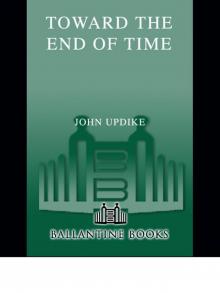 Toward the End of Time
Toward the End of Time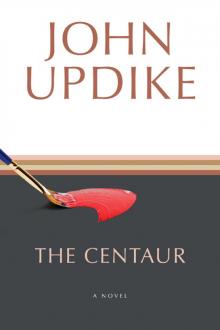 The Centaur: A Novel
The Centaur: A Novel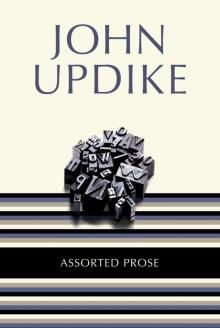 Assorted Prose
Assorted Prose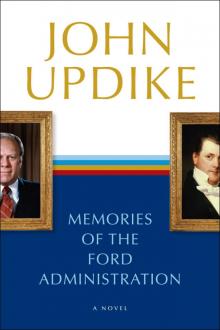 Memories of the Ford Administration
Memories of the Ford Administration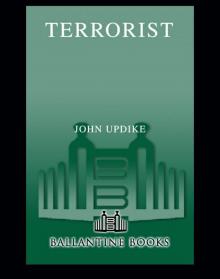 Terrorist
Terrorist Couples: A Novel
Couples: A Novel Bech at Bay
Bech at Bay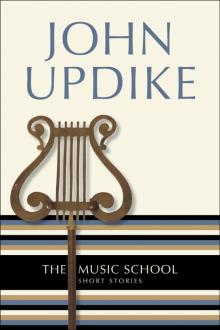 The Music School: Short Stories
The Music School: Short Stories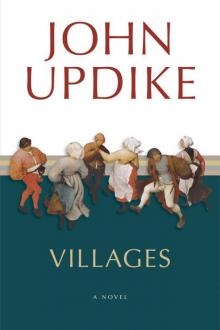 Villages
Villages S
S Roger's Version
Roger's Version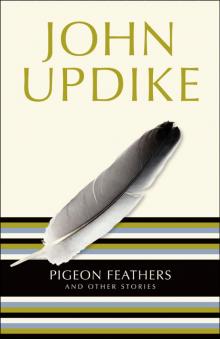 Pigeon Feathers
Pigeon Feathers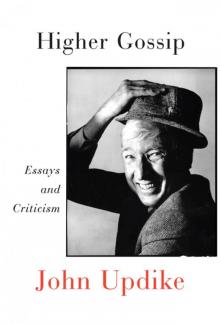 Higher Gossip
Higher Gossip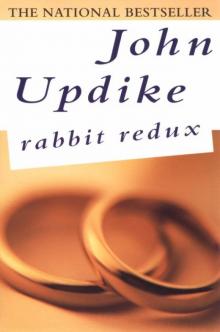 Rabbit Redux r-2
Rabbit Redux r-2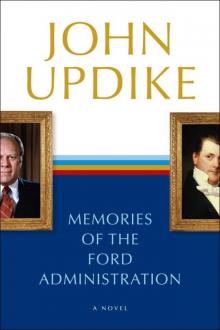 Memories of the Ford Administration: A Novel
Memories of the Ford Administration: A Novel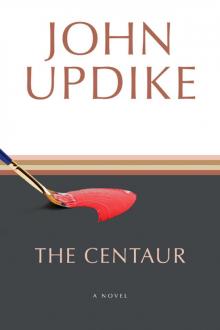 The Centaur
The Centaur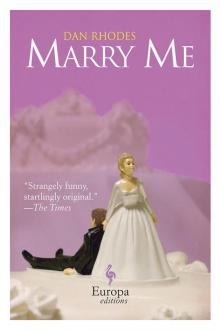 Marry Me
Marry Me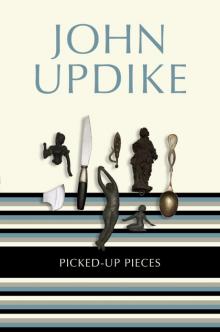 Picked-Up Pieces
Picked-Up Pieces Bech
Bech Rabbit Remembered
Rabbit Remembered Trust Me
Trust Me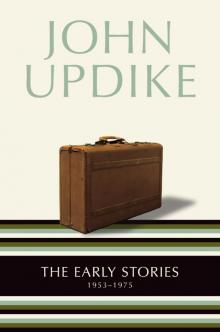 The Early Stories
The Early Stories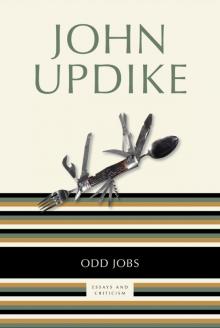 Odd Jobs
Odd Jobs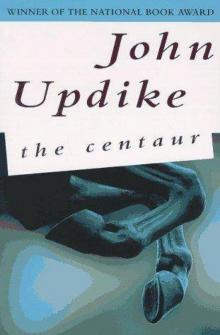 The Centaurus
The Centaurus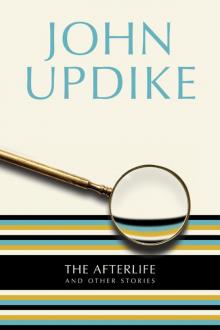 The Afterlife
The Afterlife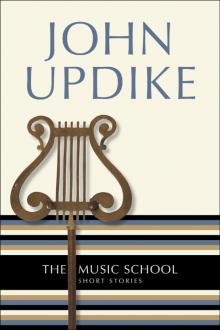 The Music School
The Music School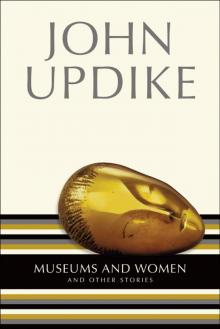 Museums and Women
Museums and Women Couples
Couples